
A giant mountain looming over you, threatening to spew out unimaginably hot lava and tons of ash any moment; would you call such a place home? After hearing the tales of Pompeii, volcanoes don’t appear to be the fuzzy, comfortable and warm home you always imagine for yourself (Okay, wait, they surely fulfil the ‘warm’ part of the deal). However, despite all the obvious facts of searing hot temperatures, acidic and anaerobic (deprived of oxygen) environments, many creatures, including humans, choose to live near these deadly beasts. Let us dive in and explore how, why and all the other questions swimming in your head right now.
The heated discussion of ‘life near volcano’ started worldwide when scientists were documenting Kavachi, one of the southwest Pacific’s most active volcanoes, and found spotted scalloped hammerhead sharks, silky sharks and a sixgill stingray swimming in its caldera (4). What caught the scientists off-guard was how could such huge creatures survive that close to a volcano?
This discovery brought forth a plethora of questions: Why did they choose to be in a place with unpredictable eruptions and highly acidic environments? Do they get annihilated due to the eruption, or do they leave? Do they have a way to detect when the eruptions will occur?

Do you mean to tell me there is actual life inside a volcano?
No, of course not. Life definitely cannot survive within the lava/magma in a volcano. Most of the life we know or can see with the naked eye depends on oxygen to live. But let us not forget the microbes that make up the majority of life on earth. Despite many species of microbes thriving in the absence of oxygen, they too are ill-equipped to cope with the conditions within a volcano. The reason has a lot to do with the hostile temperatures found there.
Life on earth has one component that is vital for its existence – DNA and its more primitive version called RNA. Molecular bonds bind together these crucial acids. These bonds crumble and disintegrate if exposed to temperatures as high as the ones found in a volcano (2).
However, life on earth is as stubborn as can be. Guess volcanoes were too hot for us organisms to resist their charm. If not within molten rocks, organisms have found ways to survive near these tectonically active areas. This is why you can find a reasonable variety of organisms in underwater hydrothermal vents, hot springs, ocean spreading centres and other areas located around volcanoes.
Letting microbes lead the way

Believe it or not, microbes are the definition of resilience. Many microbes thrive in oxygen-less (anaerobic) environments. Extremophiles top this microbes list and are seen in Yellowstone’s hot springs which have an extremely low concentration of dissolved oxygen and high temperatures (2). So while we humans could disintegrate just within hours of entering this hotspring (including our skeleton, yes), this extremely acidic hotspring is just a quaint little onsen for these extremophiles where they bathe, relax and complain about their day at work.
Microorganisms called methanogens reside within deep-sea hydrothermal vents and dug-up segments of our earth’s mantle. However, they certainly do have exotic tastes as compared to the others. Methanogens prefer carbon dioxide and other carbon-rich compounds, which they use with hydrogen gas to produce water and methane. Many scientists also believe that these hydrothermal vents are where marine life on earth originated.

Moving on to the slightly bigger creatures
It also appears that microbes are not the only fearless platoon we have out there. Volcanoes (both above and underwater) are rich in minerals and can be fertile breeding areas for some species as they provide warmth.
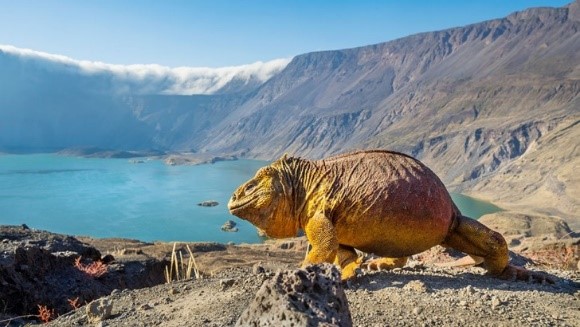
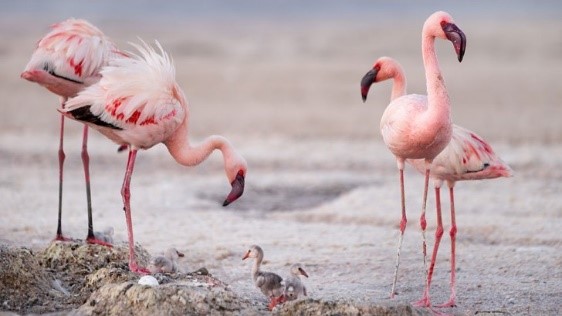
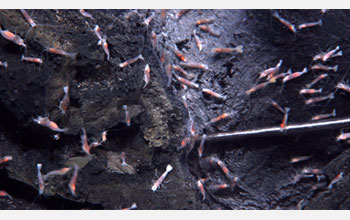
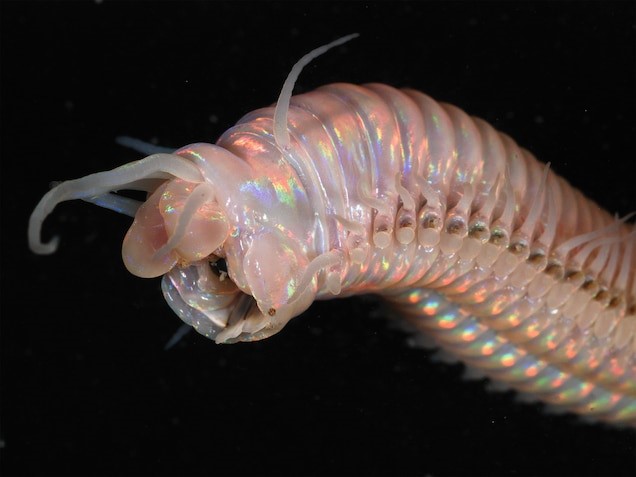
What’s in it for humans?
Admittedly as one of the most physically fragile species, we humans couldn’t resist living near volcanoes either. As dangerous as they can be, they have proven to be quite useful for us too. The soil near volcanoes is abundant in mineral deposits, making it excellent for farming activities. The geothermal energy sourced from a volcano can also power the local communities residing there. As a species, our naturally curious nature has also made these volcanoes tourist hotspots, giving rise to many job opportunities that align with it. Many locals also stay back as they do not seem to have the financial means to move elsewhere.
Due to the unpredictability of these volcanoes, the people living in these areas are accustomed to giving in to nature’s will. This is reflected in the customs, traditions and beliefs that they have weaved around volcanoes. Jordan Sonner, a realtor living on Big Island, told the Washington Post, “The way I kind of look at it is, the land does not really belong to us. It belongs to Pele,” mentioning the Hawaiian volcano goddess. “We get to live on it while we can, and if she wants it back, she’ll take it. I have good insurance.” (1)

We also have come a far way from Pompeii. Modern-day technology allows us to predict when an eruption might occur. This can be done by monitoring the volcano for change in volcanic gas emissions, recording the area’s seismic activity (earthquakes almost always precede eruptions) and so on. Hence, it is quite rare for humans to lose life in volcanic eruptions as authorities alert locals and evacuate them to safer places beforehand.
To sum it up, all of us here on earth is a tough and ambitious bunch. Different organisms have found unique ways to adapt themselves to the local environment, no matter how harsh it is. We always admire stories that show protagonists rising from the ashes and conquering the world. Well, its not too late to marvel at these creatures who are ‘thriving in the ashes’!
. . .
References:
- https://www.nationalgeographic.com/culture/article/active-volcano-kilauea-hawaii-agung-mayon-community-culture
- https://www.forbes.com/sites/robinandrews/2017/04/15/living-in-hell-the-possibility-of-life-inside-a-volcano/?sh=5bc1b3e01c1d
- https://www.livescience.com/3544-life-thrives-active-underwater-volcano.html
- https://www.huffpost.com/entry/sharks-underwater-volcano_n_7761242
- https://www.seeker.com/6-insane-animals-that-live-in-volcanos-1792699295.html
- https://www.bbcearth.com/blog/?article=the-animals-that-call-volcanoes-home
Written by:

Bhargavi Nerikar
Bhargavi is an enthusiastic Earth Sciences student pursuing her Bachelor’s at Fergusson College. She is an explorer at heart and she wishes to unearth the many mysteries our planet hosts. She is also keen on broadening the horizons of the way science is being communicated.
Illustrated by:

Shruti Morjaria
Shruti Morjaria is a self-learnt science artist and just another papercut survivor! She is completing her degree in cell and molecular biology. While she juggles between work and life, creativity keeps her sane. She says, “All you gotta do is be a passionate scribbler and see how creativity overflows!”

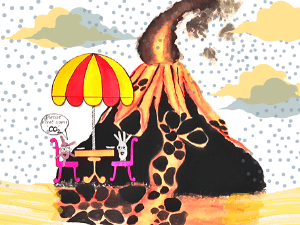
The article is indeed informative. It is the writer’s skill to make such a scientific topic engaging. It is highly commendable. The illustration is also fantastic. Keep it up 👍
Very informative …considered all aspects.. keep it up Bhargavi and lots of best wishes
Excellent article!!! It’s very nice to know about the different topic and articulated issues fantastically. Keep it up!!
The article is thought-provoking and based on facts and evidence. Kudos to both the writer and the illustrator.
Very interesting and well-organized article supported by apt illustrations
सर्वकष ज्ञानवर्धक माहितीने परिपूर्ण लेख!
मन:पूर्वक अभिनंदन आणि पुढील वाटचालीस शुभेच्छा…!
भार्गवी,खूपच छानआणि परिपूर्ण माहिती!फोटोग्राफी पण खूपच effective. अभिनंदन!
All the best!!👍
भार्गवी , अभ्यासपूर्ण लेख ! सुरेख भाषिक मांडणी !पुढील अभ्यासास मनःपूर्वक शुभेच्छा !
Excellent piece!
For someone on the wrong side of fidty like me who is. Trhu gis life afraid all things science starting with biologyb to chemistry, this made an easy and interesting reading. The illustrations added to enhance interest. Kudos to the young author.
Loved reading this!! Such interesting information. I am looking forward to read the next ones. 🙂
Incredible amount of time & effort has been devoted in producing this article with unlimited reference work as well ! All in all , very informative & illustrative & a thorough professional job ! Well done , dear Bhargavi ! I m so very proud of you ! God bless & best wishes to you, Always , in whatever you undertake !
Indeed this is an informative article. Nicely written, explained well too. Good work and keep it up.